One of the most important steps in the painting process is finding the big shapes and then simplifying them. See me doing this at 1:04 in this video.
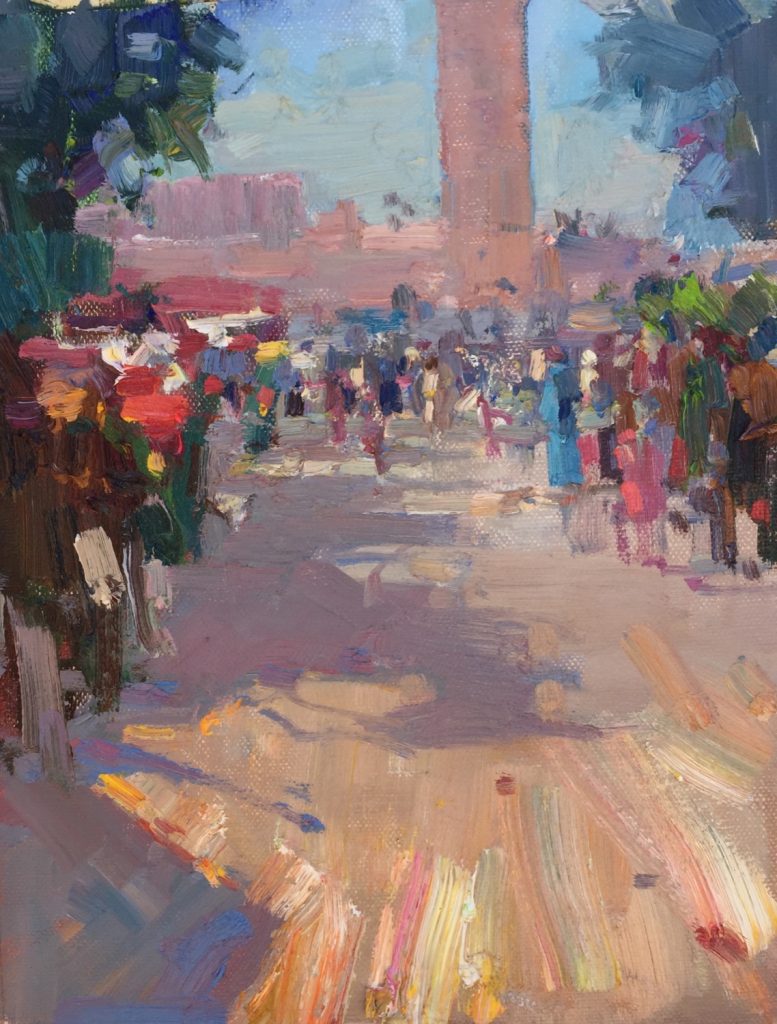
Cat. No. 1317 Marrakesh Taxi Rank – Oil on Linen – 2020
In the main square of Marrakesh, the cart and horses all line up to give tourists a tour. Horses and donkeys with carts are still used in the old medina because the streets are too narrow for cars. You often see them carrying building materials to renovation building sites.
The cart drivers were very polite and always complimented me on my work. The nearest horse though just decided to start a little river right next to my easel and backpack. So I had to make a hasty retreat to avoid it getting soaked!
Stage 1
Here is the first stage of the painting. I designed the major shapes before adding any detail by working with broad patches of colors. By leaving it simple I could easily re-adjust the shapes to work out a design. I left the painting quite abstract.
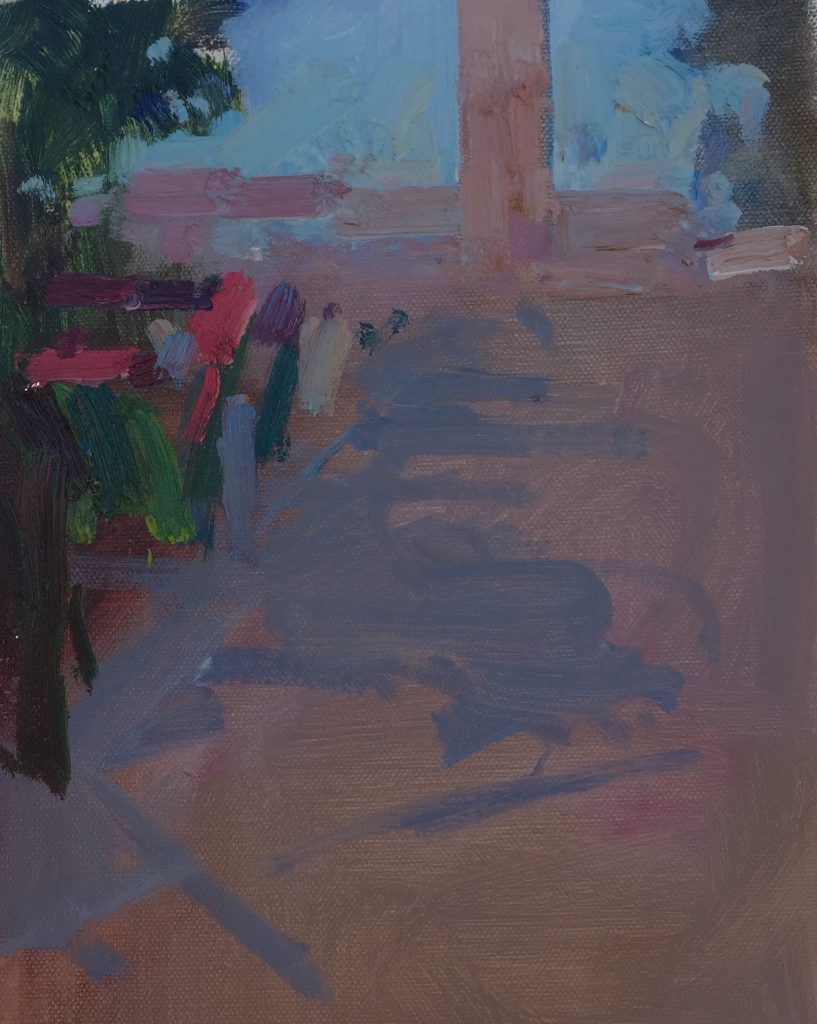
About my how to paint process and why its not step-by-step but iterative
The step-by-step approach
If you look at any book on how to paint, you’ll always find lots of demonstrations where the artist paints a picture in a series of logical stages. At each stage, the painting becomes more and more refined, until you end up with a final painting that looks just like the scene.
I too have documented an efficient alla prima or plein air process to do that in one of the books I wrote on painting (alla prima painting process). I find this is a good way to teach beginner painters, and I use the process myself occasionally.
The chaotic approach
But as you might have noticed by watching the video, when I paint it is not like that at all. I don’t proceed step-by-step just it says in the how to paint books. In fact the process is quite haphazard with lots of scraping off, wiping down, re-evaluating, changing the composition or a color and repainting, then wiping down again, re-evaluating once more and then starting all over again.
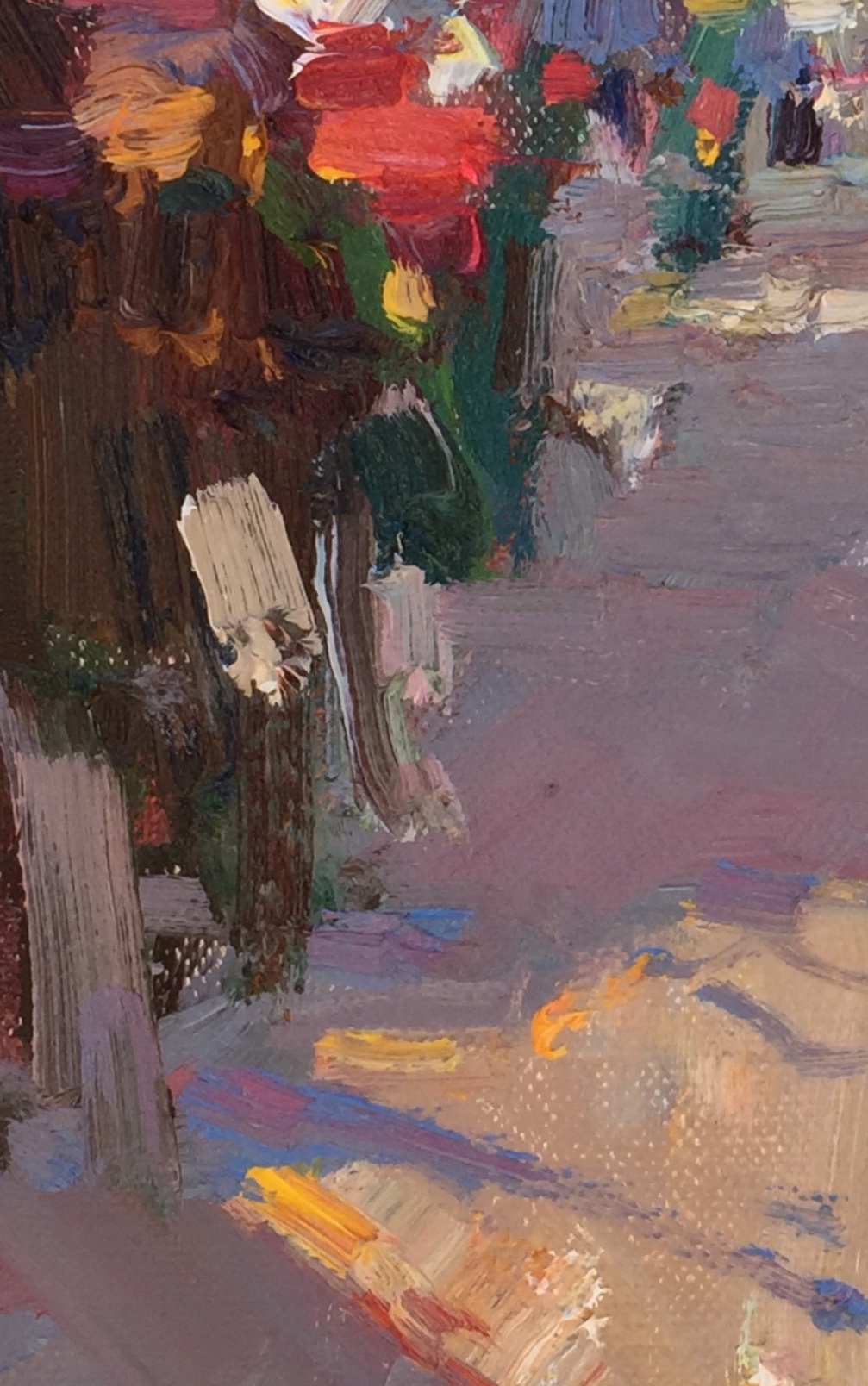
The painting gets transformed and recreated multiple times in a seemingly haphazard way. It only starts to proceed to completion after the arrangement of shapes and colors on the canvas trigger some kind of aha moment when I know the painting stands a chance of working. It’s a continual cycle of creation, discovery and destruction.
The more I paint now, the more I am doing this. What I am doing is searching for a creative idea that will make the work stand out. I am trying to make something interesting happen on the canvas with the paint. Something that will grab me. If I try to make things too literal, the end result is often quite boring. But at the same time I don’t want the painting to be entirely abstract or random. I want to capture the essential feeling and atmosphere of the place. After all, that’s why I’m standing out here sweating in the hot sun and not in a comfortable studio!
There are three things I know about the process:
- (a) it is definitely not a step-by-step process
- (b) 70-80 percent of the time the painting ends up in failure, and
- (c) I don’t know what I am doing
But when it works, I end up with something out of the ordinary that I feel really excited about, and that captures the true feeling I had when I was outdoors. It captures the colors of the place, its hustle and bustle, its atmosphere and sounds. And it’s those moments when it all comes together that makes painting fun for me.
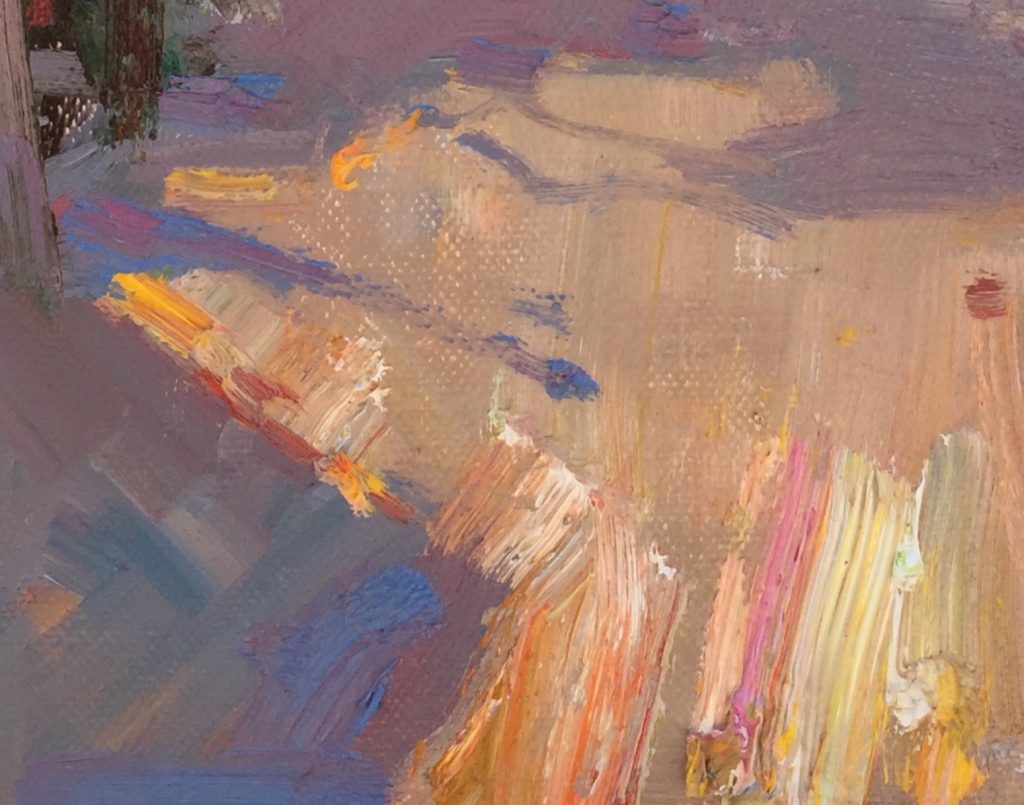
And the 70-80% of the time it doesn’t work? I just scrape off the painting, and have a great oil primed surface that is really nice to work on for the next painting!
Standard art how to books
This is why I have never published a book for one of the standard art publishing houses. I have been asked to write a book many times, but when I tell them about my real artist process they ask me to simplify it into a series of step-by-step demos. I tell them that’s not the way a painting is created and that it is more complicated than that. And then they tell me they won’t be able to sell the book if I tell the truth about the real process. So no book so far.
It’s not really random
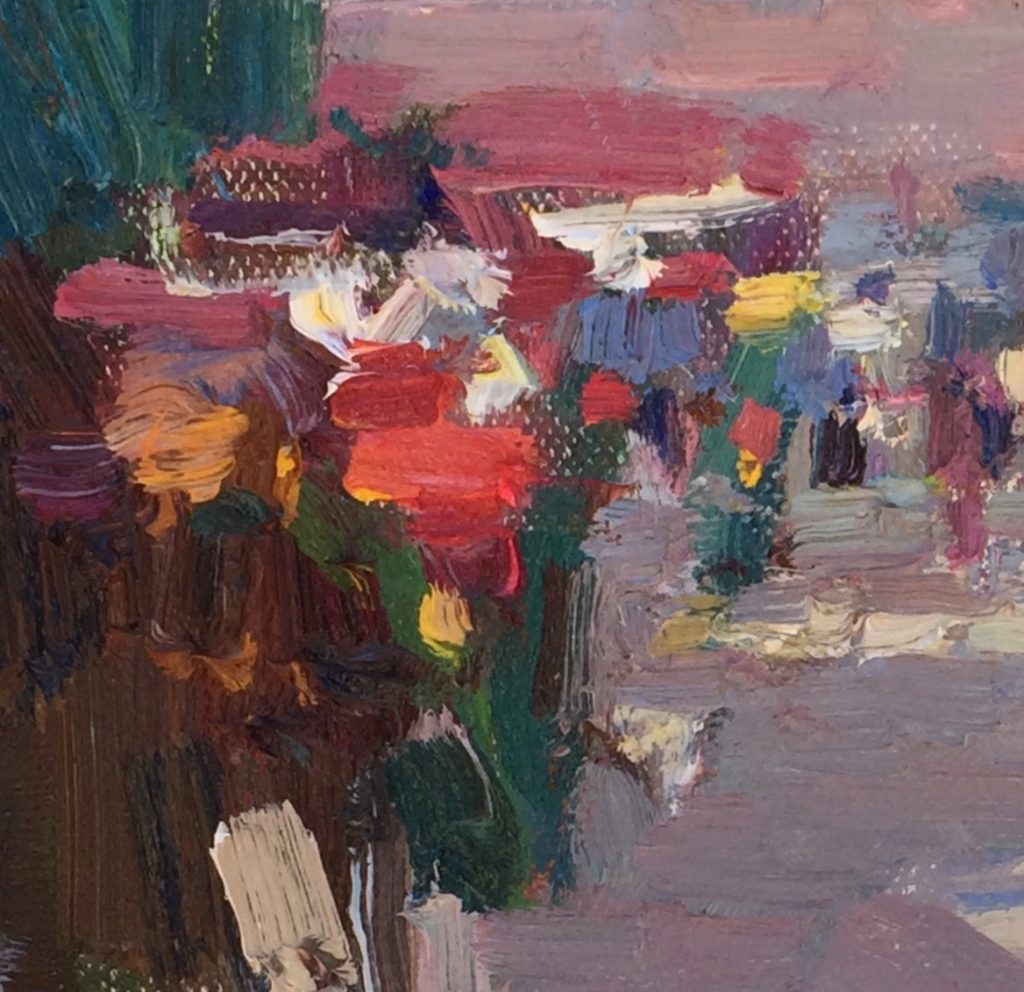
Although the process might seem completely haphazard, it’s not at all. Either subconsciously (most of the time) or consciously (when things are really getting screwed up), I am taking into account painting principles such as unequal space division, color harmonies, creating atmospheric perspective, and the dozens of other painting principles that when combined together somehow create art.
I find it best when you don’t think while you are painting, and just paint quickly and intuitively. Too much thinking and the painting deteriorates rapidly. But this is easier said than done. All of the principles need to become second nature to you to the point that you never even have to think about them. l believe that only then can you paint creatively. Incidentally this is one of the advantages of teaching. It constantly drills these basics into you.
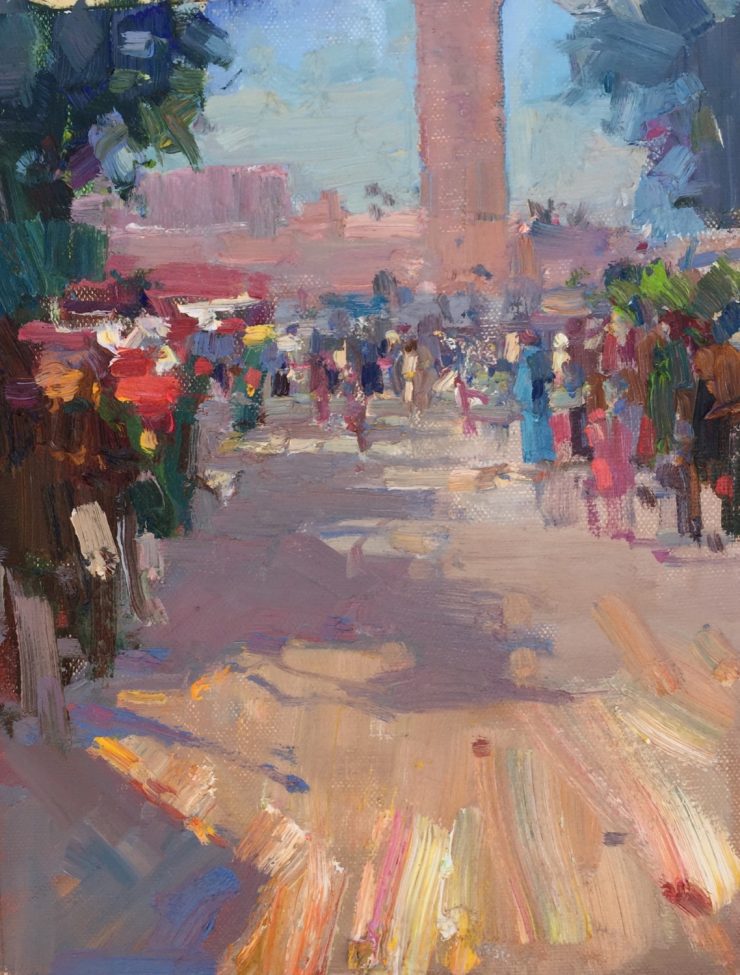

































I loved reading this. I’ve been painting for years and have always felt like I didn’t know what I was doing and that I needed to sort out some kind of process that was more reliable. Reading this has made me realize that there isn’t one, for me at least! Thanks for that.
beautiful color
thank you Deborah!
Barry
A wonderful work, I love it, the abstractive brushstroke and the light and shadow impressived me most!!!
Well done Barry with such a complicated subject where everything is moving around and a lake starting out of the blue he he.:)